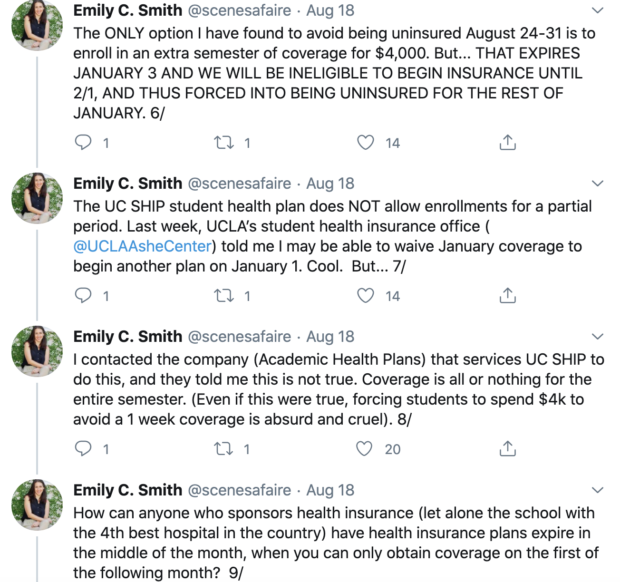(Photo by Win McNamee/Getty Images)
Donald Trump’s refusal to release his tax returns will go down in legend. He claimed they were under audit… apparently for his whole term. He marched Morgan Lewis partner Sheri Dillon in front of a bunch of prop manila folders to swear there was nothing to see — a stunt that landed Biglaw squarely on SNL. He sent the DOJ to court to claim that presidents had magic anti-subpoena powers. But now, finally, some lucky grand jurors are about to see Trump’s financial history laid bare. The rest of us seeing any of these documents depends on whether or not they find anything criminal in there.
So… we’re very likely to see these documents.
The massive, 103-page opinion from Judge Victor Marrero picked up exactly where Chief Justice John Roberts left off when he wrote last month that presidents don’t enjoy absolute immunity from state criminal proceedings. As punts go, Roberts kicked into the wind and directly toward a 20-something Deion Sanders. He didn’t order the accountants at Mazars to hand over Trump’s records immediately — which he could’ve leveled by simply affirming the decisions below — but he certainly didn’t offer the Trump team much hope that their next date in front of Judge Marrero would end any differently than the first.
With no absolute immunity left to stand on, Trump’s attorneys could only get out of this subpoena by proving that it was designed merely to harass him or articulating some specific reason it hinders his constitutional duties. They accomplished… neither.
Since the people around Trump keep getting convicted — and holy hell, Steve Bannon got pinched today — it’s hard to argue that there isn’t a valid investigative interest in Trump’s businesses. Michael Cohen has already told the world that charitable funds were used to pay off porn stars and that’s more than enough to make a valid grand jury inquiry and subsequent revelations lend credence to possible insurance and tax improprieties.
There aren’t a lot of good arguments to get Trump out of this subpoena, so his lawyers emptied the magazine of bad ones. Culminating in a true genius of a circular argument about the harassing nature of these subpoenas:
The SAC alleges that because the Mazars Subpoena was mostly copied from congressional subpoenas designed to achieve national and international goals, it is not properly tailored to the grand jury investigation and should be quashed.
In other words, “the fact that impeachment exists as a remedy doesn’t provide a president with absolute immunity from criminal investigations, but if a criminal investigation involves a president, then it could result in impeachment so that the president is immune from criminal investigation.” Judge Marrero is wildly indulgent in devoting 103 pages to this when a simple “LOL, no” would suffice. Trump also argues that Cohen’s testimony only implicated the president in a limited number of possible crimes, making the Mazars subpoena overbroad — a claim rebutted by the DA’s office explaining that they’re well beyond just those crimes at this point.
As explained in greater detail below, the President’s allegations regarding the timing and preparation of the Mazars Subpoena do not adequately rebut the subpoena’s presumptive validity. The alleged circumstances of the Mazars Subpoena’s preparation and issuance do not raise a reasonable inference of retaliation or harassment, and the President’s allegations that the subpoena’s resulting requests are outside the scope of the grand jury’s investigation fail to account for obvious alternative explanations that accord with the presumptive validity of the subpoena.
At every turn, Marrero provides a detailed response — arguments that could be addressed with a cursory citation to well-established law are given paragraphs of analysis. The straightforward claim that tax returns might be relevant to Congress for one reason and a grand jury for another gets pages of discussion!
What happens next? One assumes that the Second Circuit will be hauled in on an appeal to declare, “didn’t we already deal with this?” and then the Trump team will likely try to get themselves back in front of the Supreme Court.
But that next SCOTUS appointment isn’t likely to offer him much solace. The Court already ruled 7-2 on the actual legal question here and any future appeal would be asking them to disturb the district judge’s application of that prior opinion to pleadings when they’ve already tacitly admitted that they agree with Marrero. All the Supreme Court might offer Trump at this point is a hearing date after November in a bid to maintain its precious — if farcical — apolitical institutional status.
But one way or another, these documents are getting before a grand jury sooner rather than later.
 Joe Patrice is a senior editor at Above the Law and co-host of Thinking Like A Lawyer. Feel free to email any tips, questions, or comments. Follow him on Twitter if you’re interested in law, politics, and a healthy dose of college sports news. Joe also serves as a Managing Director at RPN Executive Search.
Joe Patrice is a senior editor at Above the Law and co-host of Thinking Like A Lawyer. Feel free to email any tips, questions, or comments. Follow him on Twitter if you’re interested in law, politics, and a healthy dose of college sports news. Joe also serves as a Managing Director at RPN Executive Search.



 Kathryn Rubino is a Senior Editor at Above the Law, and host of
Kathryn Rubino is a Senior Editor at Above the Law, and host of 












